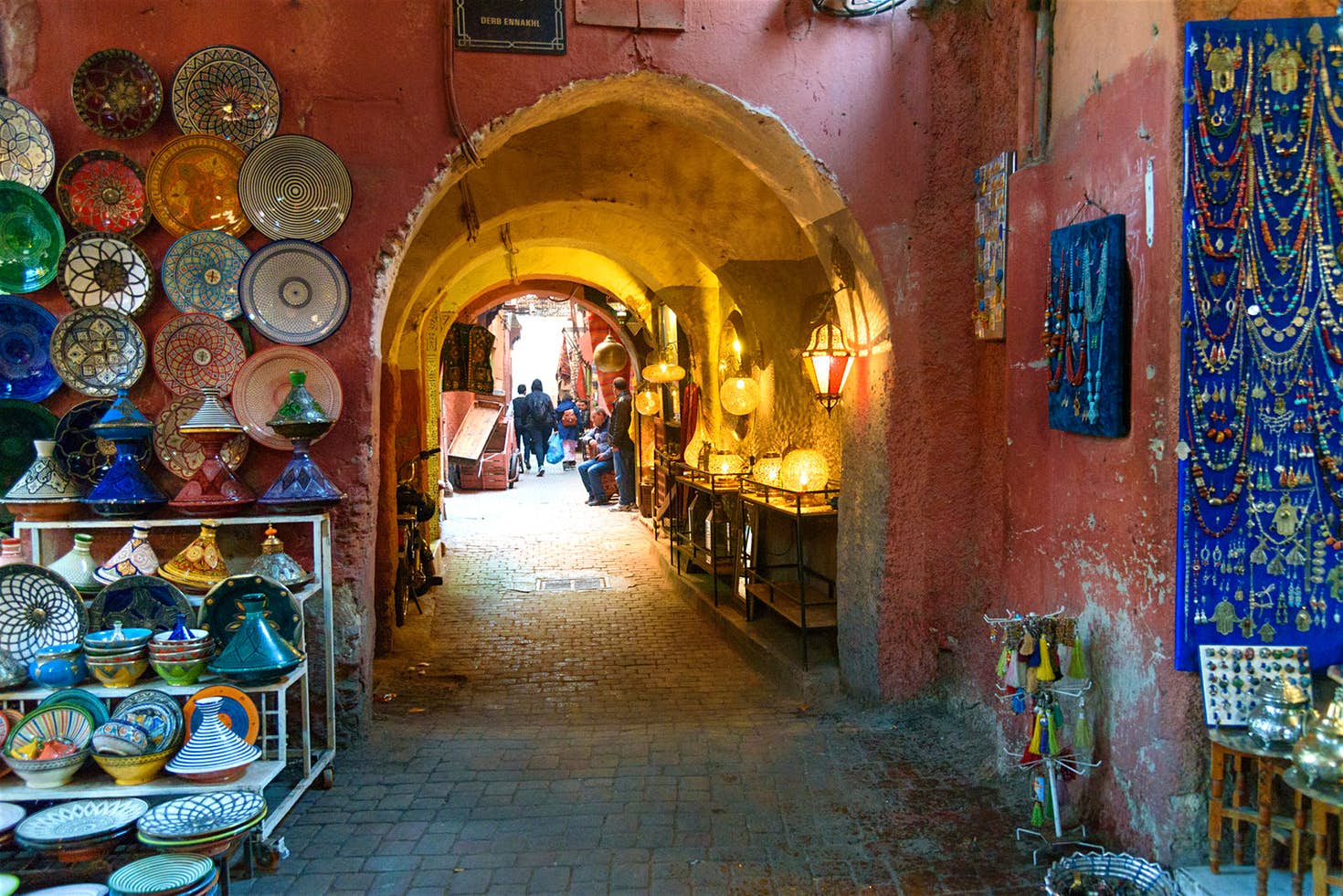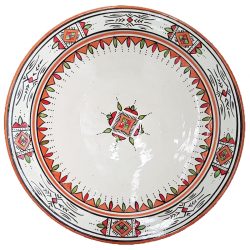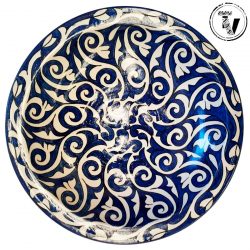The Rich Pottery Tradition of Morocco
The Kingdom of Morocco is renown for its pottery, covered with complex geometric, arabesque and beautiful, rich patterns. Moroccan art has been influenced by a diversity of cultures due to being occupied by Romans, Vandals, Visigoths, Byzantine Greeks ( 278AD to 429AD ) and the conquering Arabs who introduced their Islamic civilization in the late 7th century. The indigenous Berber tribes were generally converted to Islam around this time. The intricate hand-painted ceramics of Morocco usually reveal designs that have been influenced by Islamic culture. Some tribes in Morocco have been painting the same design for over 200 years.

Their pottery tended to be hand-painted with fine details, deep colors, and a variety of handspun designs. The Muslim Arab invasion and settlement of Morocco and Spain in the 7th–9th century led to an upheaval in the ceramic production of utilitarian & decorative vessels and architectural features. Over 8,000 artisans from Andalusia in Spain were brought into Fez and spread their techniques and styles of Islamic designs using tin oxide, lead fritted, opaque low fire glazes. The infusion of Islamic thought into every aspect of daily life became a prominent influence, where even common utilitarian vessels became the carrier of either a pattern that could be related back to the Infinity of God or to the Word of God. Islamic patterns based on Muslim principles of a balance between the male (geometric or containing design) and female principle (arabesque, vegetal or foliage decoration) were used. The other common style of Moroccan pottery was of Berber orientation which featured hand-built, clay slip decorated tribal pottery, characteristically using signs and symbols to repel evil spirits and insure protection for the owner and potter. The Berbers considered their work more “masculine” than the other more decorative, colorful and “feminine” urban Moroccan pottery.
As the “wild west” of the Islamic world, Morocco quickly became a haven for many dissidents, rebels, and refugees from the eastern caliphate. Among these was Idris ibn Abdallah, who with the help of the local Awraba Berbers, founded the Idrisid Dynasty in 788. His son Idris II erected a splendid new capital at Fez and launched Morocco as a centre of learning and major power. The Imperial city of Fez is one of the kingdom’s most beautiful places. It offers uniquely designed and colored Moroccan ceramics with an Islamic influence viewed in the intricate pattern, colors, design, and production. For over six centuries Fez has proudly created the finest Moroccan pottery. Its beauty comes from the complex knowledge of geometry passed on from father to son. Fez is renowned for the choice of cobalt oxide that permits to obtain every shade of blue. Polychrome enameled ware is more respected in Morocco.
In 1660, Morocco came under the control of the Alawite dynasty. It is a sheriff dynasty—descended from the prophet Muhammad—and rules Morocco to this day. During the 17th and 18th centuries, Morocco was one of the Barbary States, the headquarters of pirates who pillaged Mediterranean traders. Morocco was colonized by both the French and the Spanish.
The floral and geometric Moroccan designs are available in cobalt blue and multicolour. This highly decorative ceramic style was greatly influenced by the Moorish and Spanish culture. The main centers for ceramics are Safi, which produces pottery inlaid with metal, and Fez, which produces the very distinctive blue and white fassi pottery.
Most Moroccan pottery design is heavily influenced by Islamic or Berber art. Intricate geometric and arabesque patterns tend to cover the entire surface of pieces, completely transforming the humble clay building materials. Groups of artisans carry on centuries-old traditions in their designs, passed on through families. Many pieces of pottery from Fez are various shades of blue, due to the use of cobalt oxide in glazes. Pottery from Safi is known for its metal inlays and is often made of red clay and glazed in green, turquoise and black. Potters throughout the country tend to use multicolor designs, whether Moorish-influenced curlicues or floral motifs.
how the ceramics are made

Sourcing 
Wedging 
Forming
1. Sourcing Clay
Moroccan ceramics are traditionally made from red clay which, in its solid form, contains minerals and weathered rocks. The rocks are first collected and broken down to create powdered clay.
2. Wedging
Powdered clay is then mixed with water to form wet clay before starting the wedging process. This technique of mixing and rolling out the clay using their feet upholds the clay’s integrity, making it consistent and air bubble-free throughout.
3. Form
This is where the true magic happens and shapes finally take form. On a potter’s wheel, the clay is then turned into cohesive pieces where the body wall has an even thickness all around. Through skilled artisan hands, the clay is molded to perfection.

Firing 
Glaze 
Decoration
Fire
After being formed into intricate shapes for vases, cups, and dishes, the clay is left to dry for a few days before being fired using a kiln. This changes the clay’s structure into ceramic material without fully fusing it.
Glaze
Now the glazing process can begin. The glaze is a mixture comprised of ground glass, clays, coloring materials, and water. It is then applied to the bisque item by dipping, pouring, spraying, brushing, or a combination of all these techniques!
Decoration
Each piece is then hand-painted with the utmost precision, using multiple glazes to achieve the exact color and effect desired by the artist, who brings intricate designs and vivid colors to life!
Final Fire
The pieces are then fired one last time to seal everything in and fuse the bisque structure to the glaze.
These works of art then find their way into markets all over the world and into your homes! We’re so fortunate to take part in the preservation of this centuries-old tradition.











